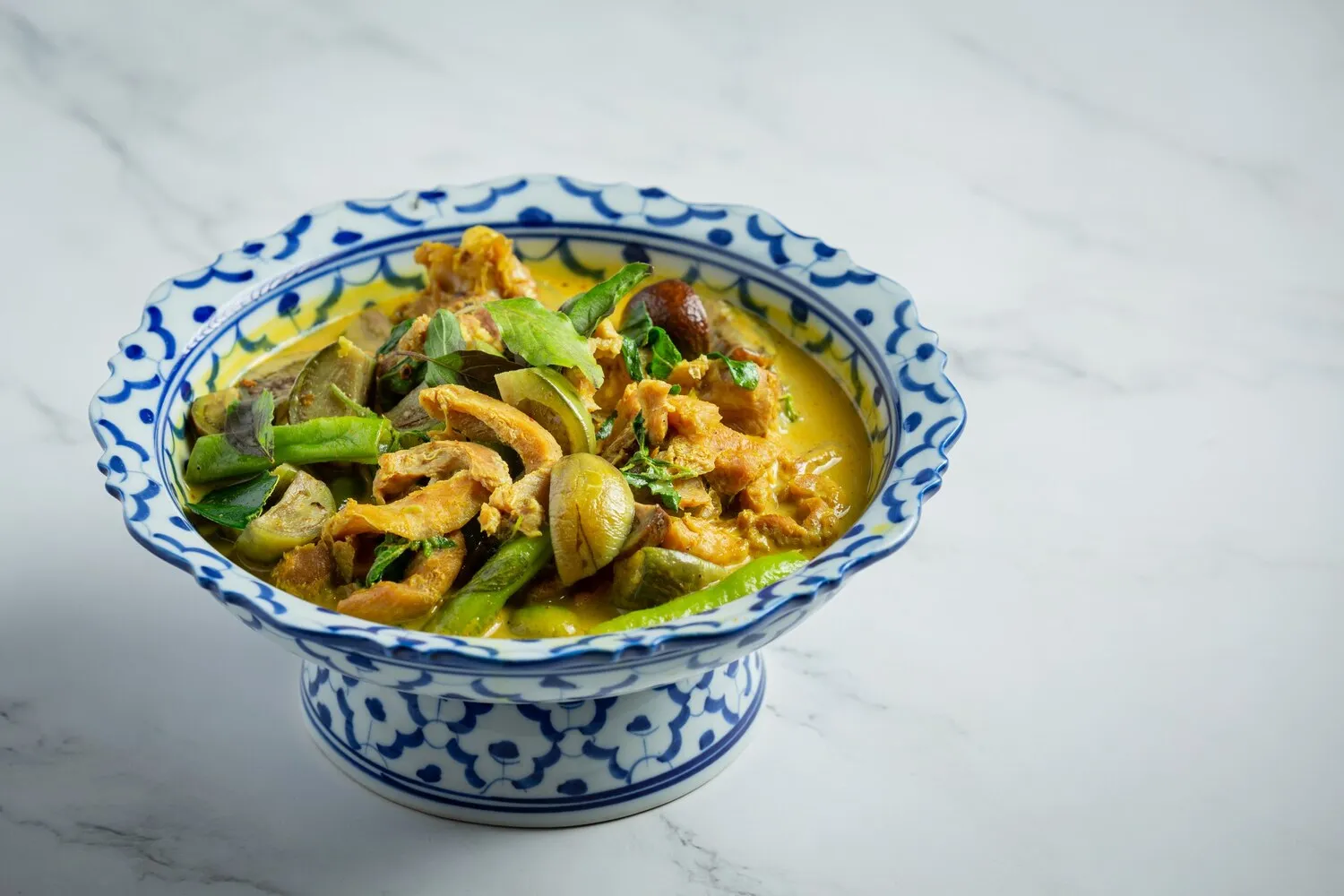
Red Curry
Thai red curry with coconut milk, bamboo shoots, bell peppers, and your choice of protein.
Nutrition Facts
* The % Daily Value (DV) tells you how much a nutrient in a serving of food contributes to a daily diet. 2,000 calories a day is used for general nutrition advice.
Thai curries have been influenced by Indian cuisine, particularly through the trade routes and the introduction of spices like cumin and coriander. However, Thai cooks adapted these spices, blending them with indigenous ingredients like chilies, galangal, lemongrass, and kaffir lime leaves, to create distinct Thai curry pastes. Red curry is thought to have emerged in central Thailand, with influences from the royal cuisine.
Red curry is a staple dish in Thai cuisine, frequently enjoyed in homes and restaurants alike, and is often associated with communal meals.
Communal Dining
Thai curries are commonly served with steamed rice as part of a shared meal, where several dishes are placed in the center of the table for everyone to enjoy. This reflects the importance of family and community in Thai culture.
Regional Variations
While red curry is a popular dish throughout Thailand, there are regional variations in spice levels and ingredients. Some regions may use more chilies for a spicier curry, while others might incorporate local vegetables or fruits.
Religious Offerings
In some instances, Thai dishes like red curry are offered to monks or at temples as part of religious ceremonies, reflecting the significance of Buddhism in Thai culture.
Red curry is characterized by its rich, creamy, and moderately spicy flavor profile, balanced with sweetness and umami.
The dominant flavors come from the red curry paste, which typically includes dried red chilies (responsible for the color and heat), garlic, galangal, lemongrass, coriander root, kaffir lime zest, shrimp paste (for umami), and cumin. Coconut milk adds richness and sweetness, mellowing the spice. Bamboo shoots provide a slightly bitter and crunchy texture, while bell peppers contribute sweetness and a vegetal note. The choice of protein (chicken, beef, pork, tofu, or shrimp) influences the overall flavor, but the curry paste and coconut milk are the foundational elements.
Quality Curry Paste
Using a high-quality, freshly made red curry paste is crucial for achieving authentic flavors. Store-bought pastes can be used, but try to find brands that are known for their quality. Consider making your own for the best results.
Coconut Milk Selection
Full-fat coconut milk is recommended for a richer and creamier curry. The fat content helps to emulsify the sauce and create a velvety texture.
Tempering the Paste
Gently frying the curry paste in oil before adding the coconut milk helps to release its aromas and flavors, resulting in a more complex and flavorful curry.
Balancing Flavors
Taste the curry as you cook and adjust the seasoning as needed. You may need to add fish sauce for saltiness and umami, palm sugar for sweetness, or lime juice for acidity to balance the flavors.
Explore additional Curry dishes and restaurants
Explore CurryDiscover top dining spots and culinary experiences in Uppsala.
Explore UppsalaLearn more about the food culture, restaurant scene, and culinary heritage of Sweden.
Explore Sweden